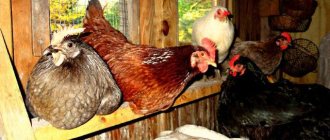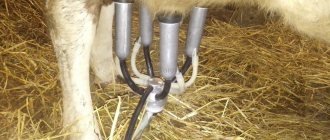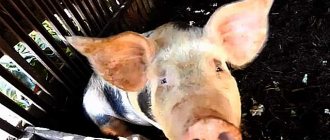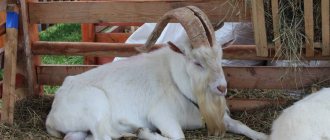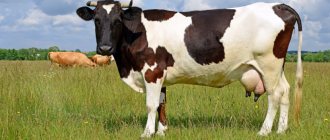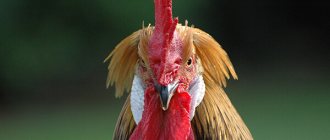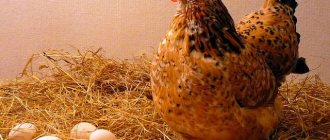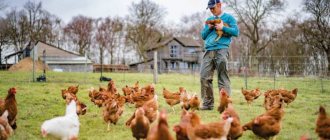It is difficult to imagine a poultry farm consisting only of laying hens, although this does occur. How many chickens per rooster is needed to increase the number of birds so that the birds do not harm each other? The male is also the leader of the flock, so it is important to properly distribute individuals on the farm so that the laying hens are supervised and protected, and the males do not infringe on each other.
Rooster selection
When buying roosters, you need to be guided by its pedigree; its parent pair must be healthy and productive. The rooster itself should show no signs of any disease. It must be distinguished by breed characteristics. The comb should be scarlet, which is facilitated by excellent blood supply to the external organ. The legs are straight, the toes have the correct shape.
A very young rooster is spurless; they will grow later from the characteristic bumps on his legs. The first thickenings are noticeable at 4 or 5 months of age. Upon reaching two years of age, the spurs grow by 2.5 cm. Every year they will grow by a centimeter. In old males, the processes on the legs are curved upward. Belonging to a particular breed should be taken into account, for example, small Bantam chickens have distinctive needle tubercles; age cannot be determined by such spurs.
Advice: Sexually mature individuals are preferable for introduction into a new herd. The male should be approximately 5 or 6 months old.
A good rooster is distinguished by a lively temperament, a lively, cocky disposition and a tendency to lead the flock. Do not confuse a fighting character with aggressiveness. If a bird attacks a relative of the same sex or birds of other species, this is in some cases the norm, but if it constantly pecks chickens or people, it is better to slaughter it and eat it. It is best if the roosters purchased for the flock belong to the same brood, their weight category should also be the same, it will be easier for them to coexist in the same avian society.
Creating a productive chicken flock is best left to the autumn. Adult, experienced roosters join the younger generation of hens, while mature laying hens should live with young roosters.
Tip: You can distinguish a male from a hen by the cloaca; roosters are endowed with a small sexual growth near it; laying hens do not have this feature.
Experienced poultry farmers can recognize male chicks using the old-fashioned method. The chicken turns upside down, the man's fingers holding its paws. If the chick is a hen, it hangs in a calm state, without moving. The chicken rooster looks around, tries to achieve balance, its head is pulled towards its stomach.
Important Function and Other Features
About egg fertilization
For the eggs to be fertilized, the rooster must come into contact with the genitals of the hen's cloaca.
It should be noted that with high libido in a male, the quality of the seminal fluid decreases. In this case, not every egg will be fertilized.
And vice versa - with a small number of matings per day, the concentration of semen in the rooster increases. Find out more in the article How Roosters Impregnate Hens.
Much depends on how old the male is.
Age
Puberty of males occurs at 4-6 months. There is an opinion that after two years of activity the old rooster should be replaced with a young and healthy one.
Roosters intended to improve the qualities of the breed are carefully selected. They must come from the best layers of the flock.
Moreover, in order for chickens to produce high-quality offspring, it is recommended to take the cockerel from another herd. So that he is not related to females.
One rooster can be kept in the herd for a maximum of 3 years. Further maintenance is unprofitable. The male continues to eat as he ate. But the quality of fertilization drops sharply. And he's not gaining weight.
Does a chicken need a rooster?
Why do chickens need a rooster is of interest to all chicken breeders. Interestingly, if a chicken or several females are raised to provide their owners with fresh eggs and meat, there may not be any males on the farm. The female chicken is designed in such a way by nature that the eggs in her body are born without outside participation. But in order to fertilize them, she will need to be paired with a male. Nature has also endowed the rooster with the right to protect the hens with whom he is in the same flock. Birds of prey can fly over the yard at any moment, animals can sneak into some farms, and the rooster will not let his harem be offended. Sometimes their zealous care of females leads to the fact that it is difficult for the owners to approach the feeder and pour food there.
Do young chickens kept for breeding need a rooster? Undoubtedly yes. After the hen has been trampled by the male, a feeling of maternal instinct comes to her; her main goal is to hatch the eggs from which the chickens will hatch. Moreover, many males become not only caring leaders for the hens, but also for the chicks. A fertilized bird looks for a place for a nest, arranges it, and after laying eggs, incubates the eggs; it will not lay any more for now. The rooster is also important because he calls both the females and the chickens for every meal, he knows when and what the family needs to eat, and indicates this. If his fellow tribesmen start pecking at freshly laid eggs, he tries to stop it.
Introduction
When you only need eggs
Chickens will gain weight and lay eggs well if you create comfortable conditions for them. Namely, organize lighting, ventilation, high-quality food, and nesting sites. If necessary, heating and walking.
Hence the conclusion: a rooster is not needed to regularly produce eggs. It does not affect the number of eggs laid. Continuing the topic, we recommend that you read the article “Can hens lay eggs without a rooster?”
Needed or not
Before purchasing a male, you first need to decide what exactly he is needed for. The rooster is the fertilizer. And if you plan to breed chickens, then you can’t do without it.
In addition to this, the male will ensure order in the pack. Determines the daily routine. And will provide protection to chickens and offspring.
It has been noticed that when chickens live without a leader, over time their maternal instinct disappears. They stop hatching eggs. They have a more chaotic day. Strong females appear in the flock. They humiliate the weak, depriving them of privileges: food, a soft place on the bedding.
How many chickens per rooster?
What the rooster is intended for influences its active actions towards females. Lightweight and maximally mobile males are able to fertilize many female birds. For every 20 hens there should be 1 to 2 meat roosters. One male is often enough for 10 or 15 egg-laying females. Small and not heavy in weight, roosters are quite nimble; in a day they can trample from 25 to 50 females. Fighting and heavy meat breeds are better off with 8 or 12 female birds.
The number of chickens for one male should not be too large, usually not exceeding 15 or 18 individuals, depending on the breed and health of the male bird. Compliance with the norm is required for complete and maximum fertilization of eggs and for the normal natural satisfaction of females. It is difficult for one male in a large bird harem to fulfill his duties efficiently. Some hens will be unfertilized.
The mating process of chicken individuals is short, but can be repeated many times during the day. If a male has increased sexual activity (22 or more matings per day), he will secrete seminal fluid in a volume 2 times less than during normal sexual intercourse. If chicken males are limited in intercourse with females, this will only increase the fertility of eggs, and future chickens will be more viable and strong. Experienced farmers advise not to keep a rooster in a flock with fewer than 8 or 10 females, otherwise he can weaken the hens, often torturing them.
If the rooster is not intended for the purposes of reproduction and subsequent breeding and expansion of the livestock, but serves as a living decorative element in the household farm, it does not matter how many females will surround him. In this case, it is not recommended to have more than one male, since the roosters will certainly quarrel with each other, divide the territory and harem, gaining the status of a leader who is allowed to trample any female whenever he pleases. The status of leader is usually earned by the strongest and largest male birds.
Life of a male in a pack
Advantages
Let's take a closer look at why you need a rooster in the chicken coop.
First of all, the male regulates the life of the inhabitants of the poultry house by the clock. The chickens, under his leadership, wake up and go to bed at the same time. They eat. They go out for walks.
As a strong man, the rooster feels that he is obliged to protect the hens from internal squabbles. And external irritants that threaten the health and life of females. These could be predators.
Or a farmer who daily renews food in the feeders and water in the drinking bowls. Sometimes this takes about an hour. Because the male does not allow him to approach the containers and hens.
Negative points
On the other hand, keeping a rooster in a chicken flock also has disadvantages. The main one is aggressive behavior. Especially if there is more than one male in the territory.
There is always a risk of physical injury to the farmer keeping the livestock. And also for children who come close to the enclosure. Or they will go directly into the chicken coop.
How to deal with this is described in the article “The rooster pecks and attacks: what to do and how to wean it off.”
Other cons
Often, conscientious laying hens are looking for a place to hatch their eggs. But not everyone manages to do this in peace. The leader of the herd was not used to anyone sitting idle. And he looks at hens exactly like that. Therefore, he begins to chase them throughout the chicken coop. Many farmers move the males to another premises after the eggs are fertilized.
Roosters often spoil the appearance of hens. During the mating process, they injure the females. They tear out feathers and scratch. And they even hit you with their beaks. Chickens become stressed due to this treatment. And if the wounds get infected, infection cannot be ruled out.
More than 2 roosters in the flock
If the rooster is not alone in the chicken flock, especially if there are not even a couple of them, this often causes aggression of the males both towards each other and towards laying hens, other poultry in the yard and even towards the owners. Fights are inevitable in such an economy. Sometimes there are cases when the strongest individuals peck, wound and kill the weaker ones to death.
Aggression among males only hinders the chickens; moreover, females can also be injured. If hens are often trampled, this will cause injury to the females.
What to do if there are more or less roosters than normal
However, situations in life are different, and it is not always possible to physically adhere to the recommended standards.
Did you know? Chickens can make about 30 different types of sounds.
In such cases, the following techniques will help:
- When there are too many roosters for the flock, pay attention to their behavior . If they get along peacefully and do not interfere with the chickens laying eggs, then there is no point in interfering with their life. However, when males cannot divide the territory, it is better to get rid of the most pugnacious ones;
- if there are too many chickens for the available number of roosters, then you can get more birds . In this case, try to take males from the same brood, the same age, then there is less chance that cockfights will take place in your yard;
- It happens that for every male there are fewer females than normal . Chickens can suffer from excess attention, so every week let them rest, moving the birds away for 2-3 days.
When the rooster starts trampling the hens
Roosters and hens reach sexual maturity on average at 25 weeks of age. True, purebred meat animals mature later.
Tip: The age of the rooster is important when keeping it with chickens. Inexperienced young animals do not strive to get closer to females, which leads to the conclusion that the herd should have one experienced mature male, and another from the younger, mature generation.
Usually, birds mate are preceded by flirting. The hen can cluck in a special way and walk around the rooster a lot. He, in turn, tries to walk around the chicken in a circle, and also lower his wing and scratch it with his paw. The male can present a hen that he likes with a gift in the form of edible prey, and is attentive to the laying hen that he likes.
The unfavorable period for birds to mate is the time when they molt. Then they all feel uncomfortable. Chickens walk on their own. A molting male tends to offend females; he can peck them, beat them with his wings, or even deprive them of food by not letting them near the trough. When the molting process ends, everything falls into place in the relationships between the birds.
About cockfighting
Allotted area
Each rooster needs to be given some space. Males love freedom. Cramped conditions will negatively affect behavior, quantity and quality of matings.
For normal life, one male is entitled to 0.5 square meters. m.
How to avoid fights
To prevent roosters from getting into quarrels and fights, they must be properly housed in the chicken coop. All livestock are divided into families of at least 10 chickens.
How many roosters are needed per family is determined by their age and breed. Most often, in one family it is enough to have one adult rooster for every ten hens. It is recommended to keep a young male as a replacement.
When planning families in this way, you need to take the advice of experienced poultry farmers. And settle in the same territory the cockerels that originally lived in the same family. They managed to get used to each other. They will not quarrel or fight.
If fights do occur, the competitors are placed in different corners. There are other methods described in the article “What to do if roosters are constantly fighting.”

